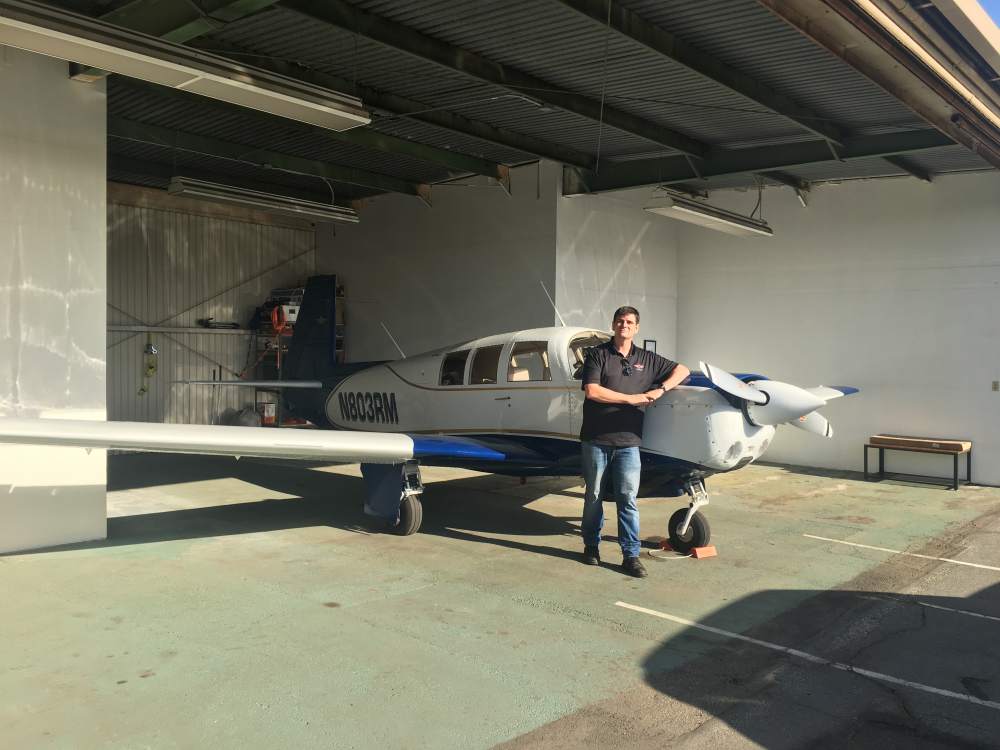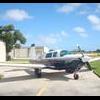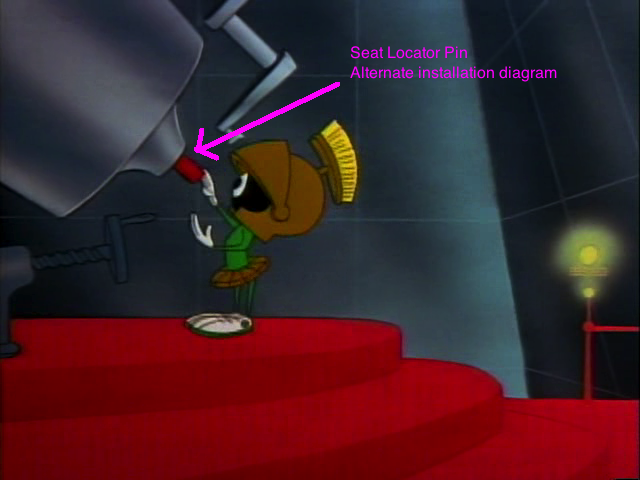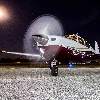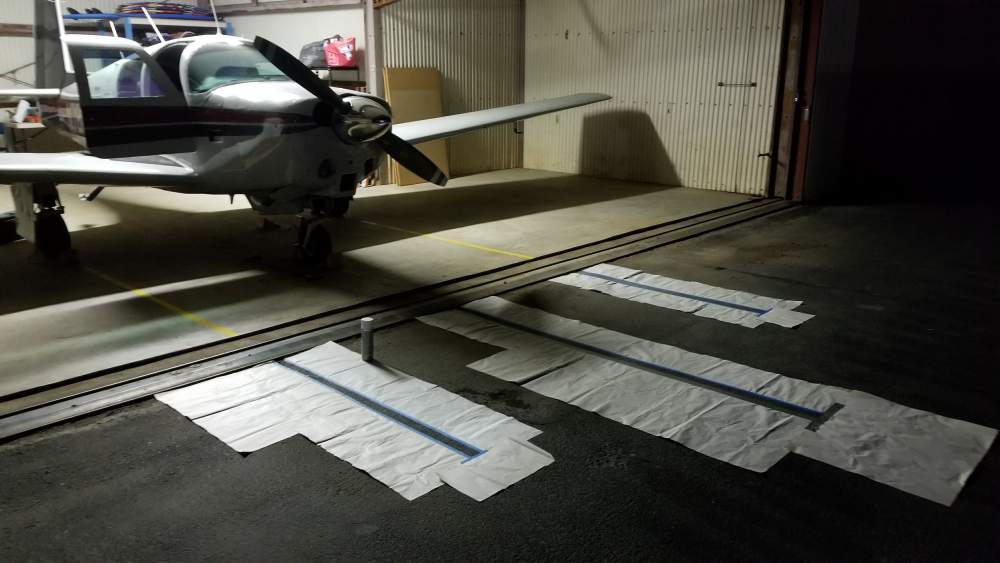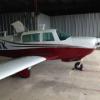Leaderboard
Popular Content
Showing content with the highest reputation on 04/23/2018 in all areas
-
I appreciate all of the feedback. Thank you to those who are defending me to others questioning my motives. As a dealer/broker, I get that occasionally. That's the primary reason I don't post here often. I'm not thin skinned. I just don't need the aggravation of being thought of as less of a Mooney lover because I happen to make my living selling them. First, I work for the owner and my desire is to put the most money in his/her/their pocket. That is the case with every airplane. Secondly, I work for a percentage commission, so I have zero incentive to sell this plane for a lesser amount than is possible. So here is more of the story. Then maybe my reasoning may come to better light and the decision to proceed will be justified... The scenario presented above is not all together out of line with reality with the exception of the corrosion on the spar. There is none. But a lot of the other worst case items are there. These are these value determinants and items needing repair (partial list). *Damage History: Not one gear up, but three. Plus an off runway excursion that caused a little damage. *Useful Load: 752#. Actual Number. Just weighed. That puts it about the worst I have seen (maybe THE worst). If you have sold as many Mooneys as I have, you will know that one of the first three questions a buyer has when he or she calls on a plane is 'what is the Useful Load'. The other two are Damage History and Leaking Fuel Tanks. So we got two out of three disqualifiers for most people right up front. *#1 Com inop (it the CNX-80 that is no longer supported by Garmin) *Transponder inop (it is the Apollo remote transponder that I don't believe is supported any more). *HSI inop *Attitude Indicator inop *Paint Poor. A lot of pealing paint *Interior Poor *Fuel Gauges Intermittent That is just a partial list. For those questioning how a plane that just went through annual is a candidate for parting out.... To Don's credit, he did not fly the plane because it did not have insurance on it. It was picked up from a broker in FLA and brought to him to annual. Don told me that the pilot did not mention any of the issues on the plane. I put the aircraft on my policy and flew it home after it was completed and that was when all of the gremlins from a good flight reared their ugly heads. I have a squawk list about 20 items long, most all of which would only be discovered on a flight. I believe 100% that the aircraft is airworthy (in the sense that is is mechanically sound and will fly from point A to point B safely). I flew it and as I mentioned in original post, the engine ran like a top and was/is actually the best part of the plane. But selling a plane like this is a major challenge. I am NOT going to sugarcoat a plane to try to get more than it is worth. In the past, when I ran across a plane like this one, I called another broker that I knew and told him to come pick up the plane and sell it for the owner (after I told the owner that I did not want to market the plane and that the other broker would be beneficial to them). I don't want to lie or embellish a plane to a prospect just to get a sale and with the disclosures I would have to put into this one, I am pretty sure the list of real buyers will be zero to just a few (maybe a guy who is on a C/E/F budget and will overlook the issues to get into a newer / faster plane). I have been doing this a long time, almost 25 years. I believe this plane will sell for something in the 90-100 range AFTER it is all fixed up. If it weren't for the damage and iffy logs, that number would be 110-120. If it weren't for the Useful Load, that number would be 125-135. All the numbers includes paint and interior plus fixing all the broken stuff or replacing it with more modern stuff. We are probably talking about 4-8 months of work and a lot of out of pocket expense to get to that point and in the end, you have a plane that is all prettied up with nice equipment but a 4 time damage / pathetic U/L and the hoped for selling price may be optimistic. I think the engine/prop/cowling has value and is about half of the total 'as is' retail value of the plane (maybe more than half based on the offer I got from a guy that contacted me from this posting). I believe that the control surfaces, seats, autopilot components, speed brakes and what can be scraped up from the panel will get it to full retail equivalent - something around $50K. That will leave the wing and the tail section that are basically going to put it over the top from a value standpoint. And yes, all of this may take a long time to sell. But I was asked to do a job and I'm going to do it to the best of my ability and with the owner's best interest at hand and if I have to work a little longer and harder to get it done, that's what I will do. So, now, if anyone would like an 'airworthy' 262 conversion at something north of $60K (which is what I am shooting for on the part out - looks like I have about $40K already in line), then give me a call before we start pulling parts. Thanks for all the comments. I will keep up with this thread and add info if needed. Jimmy9 points
-
Hasn't flown until today; did a 3.1 hour loop of TOA / SMO / LPC / SMO / TOA. Moved the trim a little nose up as you suggested, and made sure I was rotating at 75. With myself, another 200# passenger, and full fuel, she was a lot less of a chore to get off the ground, thanks! That, and knowing about the back pressure needed (and remembering to release it somewhat immediately) gave a very predictable takeoff with no stall horn. Definitely loving her... Sent from my iPhone using Tapatalk5 points
-
So yesterday I took her out on her first "mission." (Can't believe it took me 8 days to play...) Departed KTOA and, following some advice from y'all, I've got the "rotate" thing dialed in. She's definitely bigger and heavier than my old E - exactly what I wanted, it just took a minute to get used to. She doesn't climb *quite* as aggressively as BE, but still a respectable 700-800 fpm at ~2300 lbs (me, full fuel, sundry in the back), and I'm pretty sure I can wring more out of her once I get the speeds figured out. (Leaving Torrance in a box climb to 4500' to hit the LAX Special Flight Rules is a kind of specific scenario that's not really an enroute climb...) During climbs, got a couple of alerts from the EDM-700 as oil temperature reached a bit over 200 (I want to say peak was 210F, might have been lower). Still in the green arc and way below the 245F redline, but higher than the 180F Lycoming recommends. I'm not used to having such precise instrumentation! (Except in the SR22, but that's a whole different animal.) My first trip through special flight rules, I kept RPMs high (2500) but pulled MP back to be outside the placard range (avoid continuous operation above 24" between 2350-2550 RPM). Gained rapidly on a Cessna in the corridor. Getting down at Santa Monica was the usual PITA, and I slipped it down before stabilizing for short final. Greased it. She's just as responsive as my E was, in landing / the flare. Very easy to make small precise corrections. Showed her off a bit to my flight school friends over at Proteus, picked up my passenger (an old friend who returned to aviation recently and is training in their SR20s), and headed up towards Lompoc. GPSS FTW! Great, easy flight. She purrs. Very comfortable, very stable. Those updated seats are "yuge." Sit a bit higher than in BE (which had the flat 1966 seats and your legs were right in front of you). Better visibility, better back support. Awesome. It's still no Arrow, and with my size 13 clod hoppers I have to be extra careful on ingress and egress, but that's a Mooney for you... Lompoc had interesting winds, varying +/- 30 degrees or so through runway heading, 12 gusting 17. Mooney. Easy small precise corrections. (Can't do that in an SR22; with that spring-loaded side stick/yoke/whatever it is, there's no feel for what the aircraft is doing, and those tiny corrections can't really be made. IME anyway.) Enjoyable lunch in Los Alamos (and brought back some Shokrian Syrah). Our Uber driver on the way back asked what we were flying. When I said "Mooney" he detailed how his father just got back from "San Antonio" where he bought a new Ovation. Small world. Topped off the tanks in Lompoc (cheap(ish) AvGas) and compared with the FS-450; might need a smidge of recalibration. Refining my ForeFlight checklists to reflect the systems in this plane. (The fuel quantity indicators - left more than right - like to take a while before they read quantity. When they eventually wake up, they're accurate. Can't wait to rip out the 49 year old right panel instruments...) Flight back was as expected. Blew through the practice area near Malibu at ~160 knots over the ground (~5 knot tail wind), as ATC pointed out we had a bunch of traffic (3-4 planes) converging from our 7-9 o'clock positions. MooneyZoom! My friend Gary was working local at Santa Monica tower, didn't recognize my call sign or voice. Had us turn base early in a tight pattern, but still got it trimmed and stabilized for another greaser. Gary, on break, came over to check it out. Popular aircraft! Departing, she climbed easily up to 3500' for the southbound trip through special flight rules. This time I configured her for 19.5/1950, which kept her below Vle. Perfect. By the time I got to the Torrance airspace, I could throw the gear down and get down to TPA almost easily. (Still had to extend downwind a bit, but at least I didn't have to overfly the airport and could just do a normal right pattern for 29R.) Another greaser. She's very stable and predictable. Taxiing back to the hangar, was blocked for a few minutes by a Sling 4 two doors down. Got to try out the phone integration on the PMA450. Worked perfectly. Love that audio panel. Tucked her in - my second attempt at putting her in the hangar (a 38.75" wide T) was a lot smoother than the first. Getting the hang of this... So much nicer than BE, in so many respects. Great plane! Sent from my iPhone using Tapatalk4 points
-
80 knot headwind? On April 14th I was sitting on the ground at Dickson TN as a cold front moved through, bringing thunderstorm cells and lightning and some serious downpours with it. I knew if I waited a few hours, it would be gone and the only thing between me and my home base of KTRL near Dallas would be light rain, IMC, and very strong headwinds. The forecast was for 40 knot headwinds. I was not looking forward to my 2.5 hour flight turning into 3 hours, but I was willing to accept it as a necessary evil. I filed my IFR flight plan, got my clearance, and took off into the clouds, climbing to my cruising altitude of 8000 feet in mist and light rain. The ground was sort of visible below, but water streaked the windscreen. (I should mention here that I can hear you saying "you dork, why not fly at 4000 feet and take a 20 kt reduction in headwind?" My answer is that my M20A doesn't like to fly that low. It produces > 200 degree differences in EGT between cylinders because of the lousy job Lycoming did designing the intakes, and that sets off my EI engine monitor alarm. I never fly that low.) So upon reaching cruising altitude, trimming everything up, and leaning, I settled in for my 3 hour leg to KSUZ outside of Little Rock. And I started watching my ground speed to see if the 40kt predictions were correct. But instead of seeing something like 105 kts of groundspeed, I was seeing 90, then 80 knots. Then 70 knots. My GPS was telling me it would be 3 and a half hours flying time. I was getting more and more amazed at the hellacious headwinds. Then my Bitchin' Betty voice annunciator interrupted me as she spoke into my headset "Check Engine Analyzer". I quickly glanced at the engine analyzer and noticed that the #3 cylinder was running over 200 degrees richer than the rest. I tweaked the mixture control, but it didn't make much difference. "Check Engine Analyzer" she said again. At this point I looked at the manifold pressure gauge. Wow, 15 inches. The airspeed indicator said 115mph. Ground speed was down to 65mph. Hey wait a minute, I should be seeing a lot higher indicated airspeed and MP at 8000 feet. I quickly concluded there was something wrong with cylinder #3 and that was robbing my engine of power. This was not an 80 knot headwind. This was an engine problem! Many of us learned to fly in a Cessna 152. I still remember how the approach to landing power reduction was drilled into my head by my CFI, Bill Riggins, in 1983: Abeam the numbers, pull carb heat, reduce throttle to 1500 RPM, hold altitude until the airspeed drops inside the white arc, then lower one notch of flaps. Yada yada. When I started transition training in my M20A, my instructors told me I will rarely ever need carb heat during approach to landing. And indeed, in 12 years of flying, I have never needed carb heat. But I remembered someone saying, if you're having difficulty in a carbureted Mooney getting the cylinders to have a more balanced mixture, try adding carb heat. So I did. And I watched the manifold pressure climb. 16, 17, 18, 19, 20. And the airspeed climbed. And the groundspeed climbed. And the #3 cylinder EGT rose. I looked at the outside air temperature gauge. 56 degrees. Couldn't be carb ice. Could it? I turned off the carb heat and watched the engine power slowly begin to drop. 19", 18", 17". OK, carb heat it is. I flew with carb heat on until I popped out of the clouds. At that point, I tested carb heat and found it wasn't needed anymore, and I continued my flight as usual. Greg Ellis reminded me of the graph showing severe carb icing possible from 25 degrees to 60 degrees with humidity levels around 75-100%. I was in probably 100% humidity at 56 degrees OAT, so very much in the danger zone. I'm not used to needing carb heat at cruise power settings, but in IMC in that temperature range, it may be worth thinking about this a lot more frequently in flight. A friend of mine crashed and burned in his Pietenpol in Florida because of carb ice. In Florida. It can happen anywhere if the conditions inside the venturi are suitable for ice formation. In this case it happened fairly slowly, but I suppose it could also be much more abrupt. "Take heed of thine airspeed, lest the ground rise up and smite thee. And take heed of thine dewpoint, lest the carb ice up and smite thee!"3 points
-
Took a friend flying yesterday along with his daughter. She had never flown in a plane of any kind before. After some coastal flightseeing we had lunch in French Valley. After we had lunch I put her in the right seat and she got some time flying us around. If anyone is looking for a great time, find someone who hasn't flown GA before, or if you are lucky someone who has never flown before and take them up! Her First Flight3 points
-
I am the excited, proud new owner of N803RM, the 1969 Mooney M20F lovingly cared for by another MooneySpace'r for the past 11 years. A lot of you probably remember my "E of dubious provenance," and her ignominious end. I'm not going to slam that plane; if I'd been more experienced, she may not have ended the way she did. (I believe the Swiss Cheese model played out in that situation. I do think there were problems with the plane, but looking back - and as fully discussed with the FAA - there were things I could have done differently.) This is different. My "E" was a project. This F is turnkey. She needs nothing. ADS-B, WAAS, freshly sealed tanks, AP... she's equipped. Gorgeous inside and out. Purrs. Picked her up in Yosemite this morning, flew her to PRB for the 53(!) Mooney fly-in, then brought her home. Got a hangar for her at Torrance (KTOA). If anyone's on the field tomorrow, stop by, 1300-1900... (PM me for details)2 points
-
....Next on CNN, scuba diver killed after being hit by flying debris from a high speed aircraft. Film at 112 points
-
Hi everyone...update time. First of all, the A&P/IA working with me on the changeout has indicated the POH for the A3B6D has the exact same operating parameters as the A3B6 and therefore, because the type cert spells out POH's by serial number, my A3B6D POH will cover all requirements of the A3B6 motor, which is spelled out and approved on the type cert without exceptions. Seems we are in a circular reference for this thing, but its now a case closed and I have the documentation all in order and signed. Second, the fuel pump that came from Lycoming works like a champ. It sat right on the white line in the middle of the green arc indicating 25 psi. NO overpressure at all. For those who are experiencing over pressure indicated on the gauge, be sure to make sure both electrical leads are on the fuel pressure transducer, because if one is not, it will read past 30 PSI pegged wide open. Found that out by experience. Third, the prop governor was listed as the biggest PITA of this project and it hasnt disappointed. Flew the plane Friday night for an hour and everything was working great. ONLY problem was we only got 2550RPM on takeoff so we are still messing with that. It could be a prop cable installation issue or a proper clocking of the prop gpvernor itself. A&P is working on that tonight so hopefully that issue goes to bed. Lastly, if anyone os considering doing this to their 201, I would recommend this process to all. I know every nut and bolt and wire forward of the firewall and have a complete understanding of how all the systems come together. This has been a fantastic learning experience!!2 points
-
I cringe too, but thankfully don't have to deal with a state income tax. To me the new tax bill is a mixed bag, yes it's nice that my paycheck is slightly more, but I don't like the idea that the deficit next year is going to once again exceed a trillion dollars. I also didn't buy into the notion that the tax cut was going to pay for itself with 4 to 5 percent GDP growth each year over the next ten years. Now there is talk of reducing the deficit by cutting back on Social Security benefits, which isn't cool to me since I'm getting closer to collecting. Just my 2¢2 points
-
Supposedly it's a contraction of snot and garbage and has military origins. I'd never heard it before, either. I feel like my life experience has expanded a bit.2 points
-
No way! You spent a lot of money and we'll appreciate whatever you got. I promise you, it's better than what I have in my panel, and I'm willing to bet we'll appreciate it more than Mrs. Steingar!2 points
-
2 points
-
2 points
-
Update: Turns out the problem was with the tach drive cable. after removing both ends from the engine and gauge I noticed that the engine drive side was rounded and no longer engaging properly. I am going with Trailboss's suggestion of the Horizon P1000 as a permanent fix. I hanger neighbor has a used one he pulled from his Bonanza. Hopefully Horizon is willing to work with me to get the necessary paperwork and reset the limits. BTW, the tach drive covers are $90 from Lycoming, or $6 from Vans Aircraft.2 points
-
2 points
-
From Trek's post over at BeechTalk: The G5 does not require a GPS to work. It works better and to a higher performance level when a good source of GPS is available, but this is not strictly required and users shouldn’t think performance will noticeably suffer if it doesn’t have GPS.The G5 corrects gyro drift using prioritized sources of data in this order.1. Internal GPS receiver2. External GPS from GNS/GTN over MapMX3. Air data https://www.beechtalk.com/forums/viewtopic.php?f=21&t=131594&start=752 points
-
It's aggravating, and a very simple fix. What really annoys me is three way switches (like in the hallway and kitchen) where with the light off, one switch is up and one is down. That's just a lazy electrician. I've gotten good enough, being in my fifth house (and over 40 abodes) that I can remove the switch from the wall, turn it over and put it back together with only the occasional tingle.2 points
-
You can certainly check for cam and lifter spalling on a continental engine. You pul the little housings that hold the that lifters off and then pull the lifters and inspect those and cam. Lycoming’s, no.2 points
-
We prefer large mythical furry creature. Screws on the switch plate lined up and 5 degrees would not fly. And yes I can see it from across the room.2 points
-
So today I tried to sync two bluetooth devices (iPhone and iPad) to my 450A. Sure enough, it worked!! I was listening to music from my iPhone, and when I got an alert from Foreflight on my iPad, the alert interrupted the music, and then the music resumed. I synced both devices to the 450A bluetooth connection (not the stream option). I bought my 450A last December. If you got yours around then, you may have some or all of the features of the B.2 points
-
Thanks for the report. I'm an advocate of following the POH with respect to carb heat, but yours is a perfect example where carb ice happened even at higher power settings. Anyone who says, "I've NEVER had carb ice in my Mooney", always needs to add the word, "YET". It happens.2 points
-
Greetings gentlemen, Those of you who have fabricated a hitch for a mowing tractor to interface with a tow-bar, if you wouldn't mind posting pic of how you fabricated/braced the hitch mount to the tractor it might give me some creative ideas. I was planning on mounting a hitch to the font frame of this 22HP Craftsman lawn tractor which I got running for $250 (w/o a deck):1 point
-
I'm not sure someone can purchase the FWF and convert their own 231 to a 262. It is a murky question, though, since the STC owner is kaput. You might find a sympathetic IA and FSDO that might bless it, but I'd make very sure of this possibility before purchasing FWF with such intent. Sent from my LG-US996 using Tapatalk1 point
-
If it has the 262 conversion paperwork/STC the whole plane should have enough value to someone looking for a great project. There are far fewer 252 models out there compared to regular 231's, or especially a more common vintage C/E/F from the high volume era... An experienced Mooney owner should look at it as a potential blank canvas to customize to their liking, without automatically being upside-down given the newer/cheaper panel options that are becoming available. Sent from my LG-US996 using Tapatalk1 point
-
Don't tell him your fuel burn, it'll ruin his whole week! If you run the same 170 mph true that I do; and if the Lance next door burns 15 gph; then we get 42% more speed using 40% less fuel than him . . . .1 point
-
When I arrive back at my home drome yesterday for the first time in 6 months my neighbor was just putting his Lance away. I started asking about it and discovered that it goes at 120 mph at 75% according to the pilot. I LOVE Mooneys.1 point
-
Try number one to pick up the airplane, guy waves me off me saying my number one comm is stuck on. Actually, it does indicate that its transmitting all the time, busted diode or some such. Works just fine. Took me about 2 seconds to figure that out. Try number two, we drive out there (a couple hours away by car) and nothing works. The GPS doesn't have power or connections to its satellites, the transponder isn't transponding, though the number 2 comm might have been working. Was too subsumed in other problems to check. Try number 3, Sunday. I take the airplane up, GPS seems to work fine. I want to make certain it works with the indicator, but I honestly don't even know how to bring up an approach. I can at least check that it works with the autopilot. Autopilot won't turn on. WTF? I would have left it except I would have encountered marital difficulties. So I took it on the solemn promise that he'll get my AP fixed. And he will, he's a good guy. I agree, I expected one thing or another to go wrong. But this had EVERYTHING go wrong. Oh well, hopefully it'll be fixed soon and I can go on my merry. Just before I drop it off for annual. And the work that has to be done on the nose gear. Two really bright spots though. The nose gear shimmy is gone. And the first landing I did, the first in 6 months, was a total greaser.1 point
-
Sounds to me like I'll have to once again struggle with the W-4 table next weekend. Root canal would be a better way to spend that time.1 point
-
My old hangar was plenty wide, my new one is virtually the same width as yours, 39'. A previous resident painted a with mark at the rear/top of the hangar where the center is. I have tape on the floor and painted lines out the front to line it up just after I moved in. I don't know if the airport there will let you but if you can it sure makes it a lot easier to push it back in. Edit: Looks like you were posting right as I did, nice to see you have the lines already.1 point
-
1 point
-
1 point
-
65C got the aluminum bowl strainer beneath the pilot area floorboards... accessible from under the plane. Lots of screws and sheet metal... If a new screen, or seal is needed... Lasar.com Best regards, -a-1 point
-
1 point
-
I get an excuse to fly my plane somewhere, and my wife gets a beach. Wouldn't miss it.1 point
-
1 point
-
Ferrules were actually in decent shape. When I removed the old Teflon the jaggy edge of the plastic tubing was to blame. Recut that nice and smooth and now the static system is tight again. Thanks for the advice. Next person who treads this way will have plenty of info.1 point
-
Took me a while, but I did a better video of the Visual Approach functions this weekend.1 point
-
Matt, What is concerning about 1300 hours? far from early failures, and not very near 2300 hours... at 100 hours per year, that still leaves you 7 years before recommended TBO... kind of in the sweet spot in my fuzzy mind. Just Wondering what is driving your decision... Best rgeards, -a-1 point
-
While you can’t check the cam for early signs of spalling,corrosion; you can check if cam is in bad shape, removing rocker covers and check the valve openings are to spec.1 point
-
I would have your mechanic inspect it. Pull the intake coupling off and inspect the compressor wheel. Feel it for smooth rotation and end play. Use a borescope up the tail pipe to inspect the turbine wheel. Inspect the turbine housing for cracks. This should all be done at annual anyway. If all is OK, Then I would say if it ain't broke, don't fix it. It should make it to TBO.1 point
-
The Acclaim prop will make a new plane out of the ol O1. Expect about 8 kts gain in cruise.1 point
-
You might just want to buy a new Curtis or similar drain valve. They are only $20-25. At the very least I’d check the oring to see if it looks damaged or aged.1 point
-
That’s about right for that Propeller. A C14 McCauley is a very time consuming Propeller, as they are threaded an the Ferules have to be removed, reinstalled, restaked an Drilled. Lots of Work in that one process. Also, keep in mind the Blades in a C14 are like finding hens teeth these day. Try an keep the grinding an fileing to a Minimum.1 point
-
A quick search of things that will dissolve moly indicates that most of them would dissolve the shirt first.1 point
-
Sorry I cannot answer your question, but looks like a good reason to upgrade to the JPI EDM 9001 point
-
There is a kind of a way. It is actually how a fair amount of corporate flight departments operate Part 91. You would want to be well versed to pull this off. Let's say your friend owns a plane. He can "hire" you to fly his plane with your commercial certificate. But he would most likely not be able to charge other passengers to fly on his plane. Rules are so wacky that I won't give rides to fellow work people when we are going to the same meeting. If there is any sort of reimbursement then it would be like I am transporting them for my employer. Once you own a plane you realize that you want to be very good friends with the people you fly. They should trust your skills and you have a duty to keep your skills and equipment sharp to keep them safe. Keep the enthusiasm for flying going.1 point
-
You shouldn't be using the fittings from Home Depot. You should use the Imperial Eastman or Swagelock fittings. Aircraft Spruce has them. They aren't that expensive. You can't get certs from Home Depot.1 point
-
1 point
-
I bought a one pound container of 1 um molybdenum disulfide powder on line about 10 years ago. it will make enough actuator grease to last me a life time.1 point




.thumb.jpg.fae0be1e8fd71696a22ca12ed3faf498.jpg)

